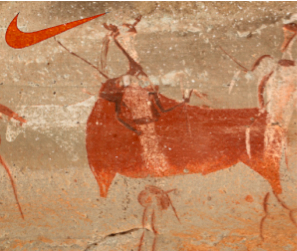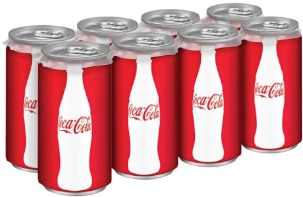


In the current Idea Email, we explore ten traits displayed by companies that use customer media and content that works to help customers discover their products and to build long term relationships with those who become buyers and users.
Here are six companies we believe are demonstrating some of those traits.

©ThinkStock
In the current Idea Email we once more explore the role of time in the use of effective marketing content. While the “journalist” in all of us may make us think the best information is what’s happening now, personal experiences throughout the day should help us recognize that the information we seek as we carry out our jobs or feed our passions or satisfy our curiosity often is found in content created outside the flow of today’s news.
Our point with this focus on the role of time is this: Often, the content your customers find most helpful may not be found on your blog or in the stream of your social media. Throughout the day, a customer may want to know if one of your products is waterproof and 30 minutes later, she may be curious about how to replace a broken part.
It’s easy to organize a website to be chronological. It’s a bit more difficult to develop a website in a topical or categorical framework that corresponds with your business focus. What is most challenging to the creator of a website, but most helpful to the users, is an organization built on a taxonomy of situations.
Your customers need help in some situation now. How easily they can find the answer they need or some type of help in making the best of the situation is the measure of your success.
Here are some simple examples of situations (you’ll need to translate them to your industry or market focus) that represent the types of needs where the definition of “timely content” is not related to when the content was created or posted, but is measured by how the content provides help to the customer at the precise time their situational need appears.
For marketers, this presents both challenges and opportunities.


 Recently, Chris Brogan invited Hammock CEO Rex Hammock onto his very popular podcast where they talked about how companies, associations and other organizations are using media and content to connect directly with their customers.
Recently, Chris Brogan invited Hammock CEO Rex Hammock onto his very popular podcast where they talked about how companies, associations and other organizations are using media and content to connect directly with their customers.
Last year, Forbes ranked Chris #1 on its list of top social media influencers. His books have appeared on the New York Times’ business bestsellers list and he’s in demand as a speaker, presenter and consultant.
Chris and Rex discuss a wide range of topics related to how customer media is helping businesses address bottom line challenges and opportunities. It lasts approximately 25 minutes and is an enjoyable listen for marketing geeks of all ages.


A successful customer media strategy hinges on what advertisers have long called “frequency” — the number of times a customer must be exposed to a message for it to be effective.
“One-and-done” customer media will disappoint your customers, as sure as “one-and-done” disappoints fans who see their team lose in the first round of the playoffs.
Recurring media is king. So recurring (and subscribable) media like magazines, newsletters, frequent blog posts and podcasts have been the early and effective tools of digital content marketers.
 Our current Idea Email is focused on the customer relationship-building opportunities of using a subscription model for the distribution of ebooks.
Our current Idea Email is focused on the customer relationship-building opportunities of using a subscription model for the distribution of ebooks.
Here are 5 tips we believe will help such a series of ebooks to become popular with your audience.
Keep it Short
By short, we mean 5,000-10,000 words. This is the length of a long magazine article. A business-to-business marketer may offer longer books, if your audience seeks content of a technical or academic nature. And a how-to or recipe series may be comprised of ebooks with less words. However, the success that Amazon.com has seen with Kindle Singles provides the proof-of-concept that short books are popular among people with demands on their time, but who desire more understanding than a blog post (like this) can provide.

Paleolithic-era Branded Content
(Post by Rex Hammock)
When I first started blogging 13 years ago, I thought I’d attempt to correct the misperception that there’s something new about companies creating informative, high-quality and helpful media for customers. Back then, the conventional wisdom among media and marketing reporters (and most marketers) was that companies communicate with customers by purchasing advertising in media that other companies own, not via media they own.
But I knew the truth: Media created by companies for their customers has been around since Fred Flintstone invented it.
 Hammock’s current Idea Email focuses on the approach the Coca-Cola Company has taken to radically pivot away from what most companies do with their corporate websites. Traditionally considered little more than a brochure website and repository for press releases and administrative content, Coke has transformed the site into an ever-changing and engaging “publishing model” site called Journey.
Hammock’s current Idea Email focuses on the approach the Coca-Cola Company has taken to radically pivot away from what most companies do with their corporate websites. Traditionally considered little more than a brochure website and repository for press releases and administrative content, Coke has transformed the site into an ever-changing and engaging “publishing model” site called Journey.
Here are some of the lessons learned from the first six months of the new approach, according to Coca-Cola executives, including Ashley Callahan, Coca-Cola manager of digital and social media communications, who made a presentation about Journey at last week’s Custom Content Council Conference. We also added some observations from our analysis of the site.
In the current issue of The Idea Email, we explain why we’re inspired by how the retailer Williams-Sonoma has made the creation and use of customer media and content a part of their mission statement.
Here are three of our favorite ways they display their commitment to “helping customers become great cooks” in a way that adds value to the cookware they sell. (We could have added lots more.)
 The Sous-Chef-Series: Williams-Sonoma has partnered with The Tasting Table for a free weekly email and website series featuring the stories of up-and-coming chefs from around the U.S. Why we like it: Great stories and recipes are coupled with Williams-Sonoma cookware that’s related to the dish being shared. A great example of “content-enabled commerce.”
The Sous-Chef-Series: Williams-Sonoma has partnered with The Tasting Table for a free weekly email and website series featuring the stories of up-and-coming chefs from around the U.S. Why we like it: Great stories and recipes are coupled with Williams-Sonoma cookware that’s related to the dish being shared. A great example of “content-enabled commerce.”